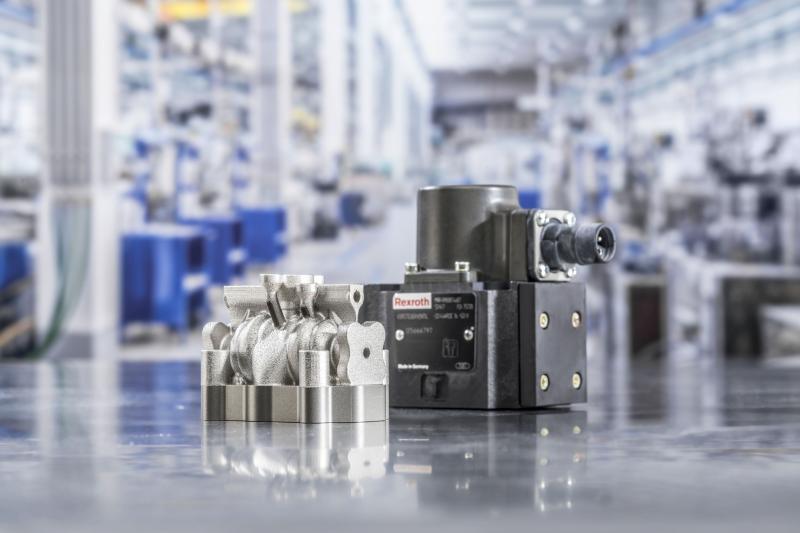
The topic of additive manufacturing is becoming increasingly important in the production of small series and prototypes, as well as in the area of Industry 4.0. Bosch Rexroth also believes in this future-oriented technology. The company worked with TRUMPF and Heraeus Additive Manufacturing to develop a further additive manufacturing process for the cost-effective production of hydraulic components. With a focus on the Selective Laser Melting method, the project involved the production of servo valves. As an additional standard procedure to conventional production this can be used above all for quick production of small batch sizes and customized variants. Bosch Rexroth already uses several 3D printers for the production of casting cores for control blocks in Lohr and has expertise in the entire process chain from engineering to 3D printing to the finished product.
Thanks to the wealth of options at the component level, hydraulics offers a high degree of freedom in configuring tailor-made drive solutions. However, this diversity increases costs for manufacturers in production. The use of the Selective Laser Melting 3D printing method reduces the level of complexity. It enables quick and economical production of servo valves or spools for directional control valves at the smallest of batch sizes. In a joint project with TRUMPF and Heraeus Additive Manufacturing, Bosch Rexroth's manufacturing specialists developed the entire process chain: from design that has been optimized for 3D printing to the finished product.
Printed variants are significantly lighter and more compact than conventionally manufactured designs. Optimized passageways reduce throttle losses and increase energy efficiency. In the future, designers will also be able to integrate new functions into the components. In the course of the project, the project team developed hybrid manufacturing of servo valves for future series applications. As part of this Rexroth combined traditionally machined preforms with 3D printed components. As a further element, the project team tested the printing of hollow cylinders as spools for directional control valves.
The project used the TRUMPF TruPrint 5000. In the TruPrint 500, three 500-watt TRUMPF fiber lasers work simultaneously on a workpiece. This cuts the printing time for a servo valve almost in half. TRUMPF also covers the entire additive manufacturing process chain, including parts and powder management.
Heraeus Additive Manufacturing supported the project by selecting the most suitable materials and is working on the flow behavior of the steel powder and particle size distribution in the range of 20 to 40 μm. In comparison: a human hair has a diameter of about 100 µm. Only reliably high powder quality makes reproducible component quality possible under real production conditions. The compressive strength of the servo valves printed so far corresponds to those of the milled components of the same steel.
Bosch Rexroth has been using the 3D printing process involving sand molds for the production of cast cores for control blocks for several years. As a result, even single units and prototypes can be manufactured with extremely short lead times. This enables customers to significantly reduce the time-to-market for their solutions and quickly implement customer-specific variants.




 Germany
Germany